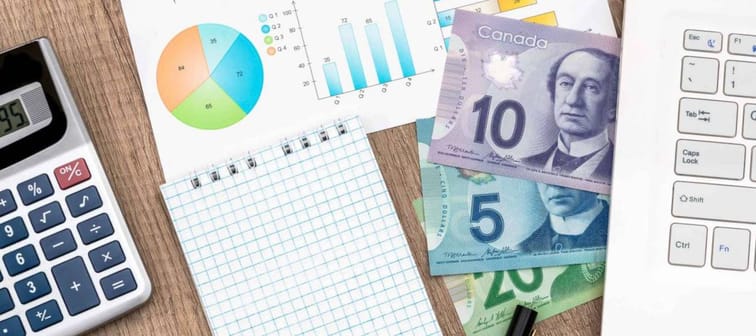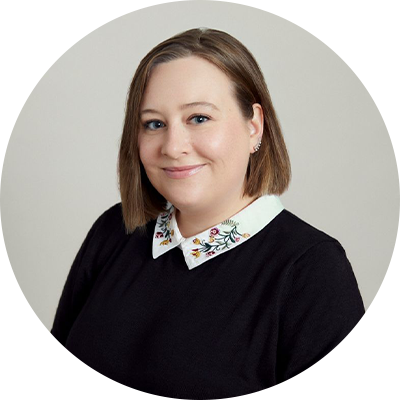Why do I need an RRSP if I have a savings account?
Introduced by the federal government in 1957, RRSPs allow Canadians to set aside a huge chunk of their income and investments for retirement.
All of the interest and earnings accrued in your RRSP are completely shielded from taxes until you retire. It’s like your own private tax haven, only without all the overseas transactions and illegal activity. While you might be letting your cash grow in a high-interest savings account, RRSPs allow you to do more than deposit cash.
You can store all kinds of investments — such as stocks, bonds, mutual funds and general investment certificates — in your RRSP, where they’ll be able to grow free from taxation until you retire. And with the beauty of compound interest, your investments could grow exponentially over the next 20, 30 or 40 years, all without getting plundered by the taxman.
Unexpected vet bills don’t have to break the bank
Spot Pet Insurance offers coverage for treatment of accidents, illnesses, prescriptions drugs, emergency care and more.
Plus, their preventative care plan covers things like routine check-ups, microchip implantation, and vaccinations, if you want to give your pet the all-star treatment while you protect your bank account.
Get A QuoteWhen is my money taxed?
With an RRSP, you make all of your contributions with “pre-tax” dollars. You’ll pay income tax as normal but you can write off any contributions during filing season, netting you a tax credit.
I need to stress how awesome that last part is, because I feel like you weren’t listening: You put money into your RRSP, note that you’ve done so at tax time and then get the money you lost in income tax back. There’s no greater feeling than clawing money back from the government, so take advantage.
You do have to pay taxes sooner or later. In this case, it’s later, when you withdraw the funds.
But that’s the key to RRSPs. You’re only taxed on the money when you’re retired and likely in a much lower income-tax bracket than when you were part of the workforce. The result: less money to the government, more money for you to spend at the slots in Miami Beach.
When can I open an RRSP?
You can start an RRSP at any age. Even minors can open one with the consent and signing authority of a parent or legal guardian. The earlier the better, really.
The only prerequisites are that the owner of the account must have an income and a social insurance number and file yearly tax returns in Canada.
You can easily open up a secure RRSP with an automated investment service like Wealthsimple.
Canada’s top credit cards—find your perfect match!
Maximize rewards, save on interest, or earn cash back. Compare the best credit cards in Canada and pick the one that works for you!
Find Your Card NowHow much can I contribute?
The limit for RRSP contributions fluctuates a little bit every year.
For 2024, the sum total you can put into an RRSP is $31,560 or 18% of your income — whichever happens to be lower. Any gains you make in an RRSP don’t count against the contribution limit, so if you’ve got the funds, go ahead and make the full contribution. The deadline for contributing for the 2024 tax year is March 1, 2025.
If you don’t happen to have a spare $31,560 lying around (most of us don't), your unused contribution room will automatically roll over. Anything you don’t add this year will increase your limit next year, the year after that and so on.
RRSPs are eligible for employer sponsorship, as well. Depending on where you work, your employer may offer to match the amount you contribute each year, up to a certain amount (so long as it doesn’t go over your contribution limit).
What happens if I over-contribute to my RRSP?
The Canada Revenue Agency allows you to contribute a maximum of $2,000 past the yearly limit without penalty (though you don’t get a write-off on that amount). This bit of leniency is there in case you made an error and were a little over-zealous in your savings.
Approaching your finances with tenacity is usually a good thing, but when it comes to your RRSPs, don’t overdo it. Any contribution that falls more than $2,000 over the limit will be subject to a 1% penalty per month until you withdraw the excess amount. Excess contributions are only registered at the end of the month, so you won’t be charged as long as you withdraw before then.
You can write a letter to the CRA asking them to waive the penalty if your over-contribution really was a reasonable error. But really, save yourself a bunch of tedious paperwork and keep an eye on your contributions throughout the year.
When can I withdraw my money?
If at all possible, you should keep your money in your RRSP until you decide to retire. It is possible to withdraw your money early in case of emergencies, but you’ll suffer steep penalties.
First off, you’ll have to pay income tax on whatever you take out. Second, you’ll permanently lose that contribution room. And third, you’ll suffer an additional “withholding tax” for the privilege.
Outside Quebec, you’ll pay a 10% withholding tax on withdrawals up to $5,000, 20% on withdrawals between $5,000 and $15,000 and 30% on withdrawals over $15,000. In Quebec, the rates are 5% up to $5,000, 10% between $5,000 and $15,000, and 15% over $15,000.
Are there exceptions? Can I use my savings for really important purchases?
If you need to, you can spend money from an RRSP on two things without penalty: buying a home or paying for tuition. You’ll have to pay the money back eventually, though.
The federal Home Buyers’ Plan allows you to withdraw $60,000 from your RRSPs ($120,000 for couples) to pay for your first home. You have to repay the full amount in 15 years. If you miss a payment, the government will treat the amount you missed as income and tax you on it.
Meanwhile, the Lifelong Learning Plan allows you to use up to $20,000 — a maximum of $10,000 per year — for tuition and living expenses. After you graduate, you have 10 years to repay the money you took out. Again, you’ll be taxed on whatever you fail to pay back.
When do I take my money out, and what should I do with it?
You can stop contributing and start withdrawing from your RRSP whenever you decide to retire. Keep in mind, you have to make the choice by the end of the year you turn 71. You have three options:
-
Convert your RRSP to a Registered Retirement Income Fund (RRIF). This is the most popular option. An RRIF is a lot like an RRSP, but you’ll have to withdraw a certain percentage each year and can’t make additional contributions.
-
Use the funds to purchase an annuity. Like a pension, an annuity will pay you a fixed amount at regular intervals. You can get annuities that last for a set number of years or until you die.
-
Withdraw the cash in a lump sum. This probably isn’t a wise move for large amounts of money. You’ll lose a ton to withholding tax right away, and taking a lifetime of savings out at once would result in a very large income-tax bill.
You can also do some combination of the three. Maybe you want to buy an annuity but also want to stow away some amount of cash in a Tax Free Savings Account (TFSA), which is another great savings vehicle.
How do I open an RRSP?
Convinced that RRSPs are awesome? Good. Setting one up is easy.
Just head to your bank or credit union and speak with a financial advisor. The whole process should take minutes. A financial advisor can also help you set up a TFSA and work out where to put your money to reach all your goals.
If you'd like to discuss your financial goals, you can connect with a Sun Life Financial advisor near you. A Sun Life Financial advisor will help you make informed decisions with personalized advice.
If virtual banking is more your style, it’s even easier to use an automated investment service like Wealthsimple. You'll be walked through the process in the comfort of your own home and get started on raking in those sweet retirement savings.
When should I get started?
The best time to open an RRSP is as soon as you start working your first job, whether that’s part-time or full-time. The second best time is now.
The sooner you start making contributions, even just a little, the sooner your money can start accruing interest — and interest on interest. That means a much bigger payout for you down the line.
Although you’ll be locking your money away for decades, an RRSP will give you peace of mind.
Your golden years are for sipping margaritas on an island, not pinching pennies and scrambling to make ends meet. Giving future-you financial security is the greatest retirement gift of all.
Now pass the lime and rock salt.
Sources
1. CPP Investments: Nearly 2 in 3 Canadians worry about retirement savings: survey (Oct 30, 2024)
Smart investing starts here
Get 100 free online equity trades with promo code EDGE100 when you open a CIBC Investor’s Edge account by Sept. 30, 2025. Click here to unlock 100 free trades and take control of your investments. Get started today.









